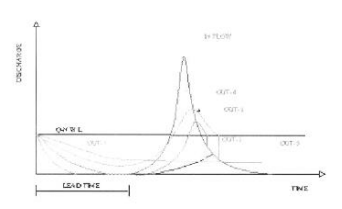
Submission to VIJ 2024-01-17
Keywords
- Spillway capacity, optimization, flood warning system, trend finding
Copyright (c) 2024 Jamil Borhan, Yousef Nasir, Mostafa Javid

This work is licensed under a Creative Commons Attribution 4.0 International License.
Abstract
As one of the most important and expensive hydraulic structures, dams are typically built in a multi-planar form, with flood control being one of their primary goals. Consequently, a specific portion of the reservoir volume is designated for flood control in dam construction projects. For safety reasons, this section must always be kept empty to prevent spillway in the event of a flood. If it is feasible to reduce or remove this volume without compromising the dam's safety, it can result in a significant reduction in costs. With the advancement of automatic flood warning systems, predicting the hydrograph and the timing of flood occurrences in the basin has become possible. This information can be utilized for dams equipped with such systems. Thus, in basins prone to flooding, it is possible to receive advance notice (pre-warning time) about the timing and volume of the impending flood. Consequently, a portion of the reservoir can be emptied in anticipation, creating a dedicated volume for flood control without the need to allocate a separate section of the reservoir or reducing the initially planned volume. An alternative perspective is that by implementing this strategy, a portion of the reservoir's volume serves dual purposes acting as water storage during normal times and as flood control volume during floods. This dual functionality contributes to a decrease in project costs, enhancing the economic justification for numerous projects. In this study, we investigated the method to achieve this objective and developed software that utilizes the aforementioned strategy to design spillway and determine the most economical option.